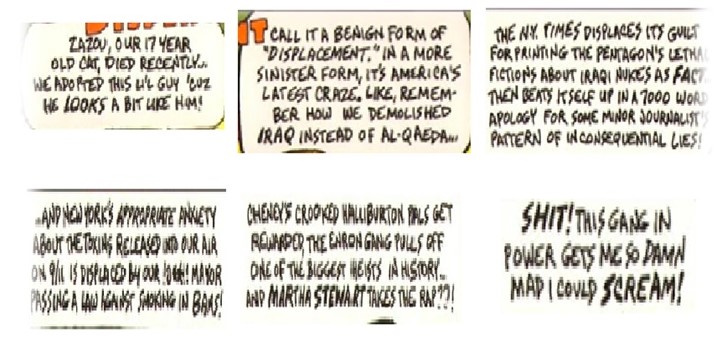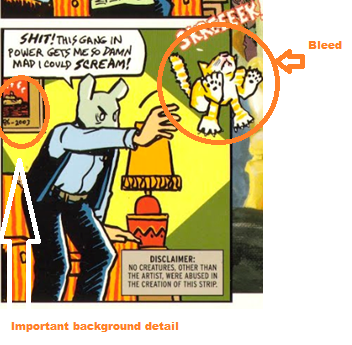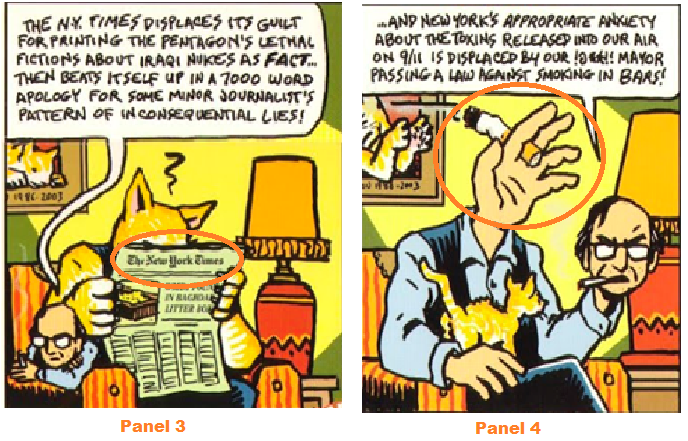Introduction
Art Spiegelman is one of the most famous authors of political cartoons, comics, and graphic novels. Spiegelman has earned his reputation for discussing and highlighting controversial topics through vivid visuals that are close and understandable to many people. The cartoon “Weapons of Mass Displacement” is one such work, which was published in In the Shadow of No Towers book that reflects reactions to September 11, 2001, terrorist attack in New York. This comic also raises important social and political issues and uses interesting visual techniques to convey the meaning of a complicated issue in several images. For this reason, this paper presents an analysis of the cartoon “Weapons of Mass Displacement” to reveal its features and the author’s technique.
Text and Its Meaning
Like others in In the Shadow of No Towers Book, this comic is Spiegelman’s reaction to the September 2001 terrorist attack in New York. For this reason, the comic has social and political significance for both the author and the readers. Moreover, a reader does not need to know all the details and news to understand the purpose of the author’s text and the comic’s main character. This situation is possible because the character explains the meaning of the term “displacement,” which is central in the title, and then gives outrageous but ironic examples of its use. Thus, the reader understands the comic’s general mood even without knowing the details of the news described. However, understanding the background of the graphic novel makes the story more socially and politically relevant.

In the comic above, the character condemns the government’s actions because of their convenient but unnecessary decisions. In the second panel, the man mentions that the US response to the terrorist attack was not a fight against al-Qaeda but an Iraq invasion. The third panel recounts the inconsistent and unethical policies of the New York Tams newspaper. The fourth panel condemns the government’s failure to protect people from air pollution by particles after the Towers’ destruction and a shift in emphasis on smoking in bars as a major source of disease. The fifth panel is devoted to financial companies and people who have been convicted of major fraud but continue to work after their scandals. Thus, the character demonstrates that people in power distract the public’s attention from significant problems, making often useless and absurd decisions.
Features of the Text
The design of the text in the comic is of great importance. Firstly, all the characters’ words are in a bubble that demonstrates his reasoning out loud. However, the caption in the lower right corner of the sixth panel is intended to create irony, since the phrase “no animal was harmed” is commonly used in films, and the author’s attitude to the actions of politicians, which he refers to as “abuse.” Secondly, each panel has more emotionally colored words and exclamation marks that show the character’s increasing anger. The paragraph ends with an ellipsis on the second panel, it has two question marks on the fifth panel, and the sixth panel includes curse words. In addition, such a phrase as “gang in power” shows the character’s attitude to government as people who do not deserve respect and trust.
Visual Elements

Nevertheless, despite the importance of text in the comic, visual elements play a central role. This comic consists of six panels of equal size that present the transition from action to action. The seventh panel is bigger and stands separately, reminding advertising (the picture above). Thus, The author demonstrates the same importance of the ideas presented in six panels. However, in the sixth panel, the cat’s image is bleed, giving the reader a sense of the strength and anger the character applies to threw the animal. At the same time, while the focus is on the main character, who is depicted in the foreground, background details also play a significant role in the story. For example, the cat in the photo hanging on the wall is also a living object that moves and expresses certain emotions. This detail is most vividly depicted on the sixth panel, since the cat leaves only a pile of excrement, underlining the character’s words about “gang in power.”

However, the comic’s main features are the use of exaggeration and confusion of images, since, on the five panels, the character’s body and interior parts of the room are interchangeable. This approach is necessary as a literal display of the term “displacement” to demonstrate its absurdity and as a manifestation of madness, which reflects the illogical decisions described by the man. This term and approach is also used to describe the consequences of the post-traumatic disorder that the character experiences in the aftermath of a terrorist attack. Simultaneously, this confusion is not accidental, and objects in the foreground reflect the panel’s issue. For example, the man on the third panel is replaced by a cat holding the New York Times newspaper, and the fourth panel depicts a hand with a cigarette, since its theme is no smoking in bars (the pictures above). Thus, the absurdity of replacing objects on panels underlines the illogicality of “displacement” in political decisions.

Other visual elements presented in the comic are glaze and vector. Although the character’s glasses do not make it clear where his gaze is directed, the man’s head position and words hint that he addresses readers. Consequently, the author encourages the audience to join in the conversation and think. The vector is marked with an outstretched hand and a dash next to it, which indicates a man’s throw. Although these elements are not central to the composition, they create its integrity. Another part of the comic is the seventh panel, which at first glance does not relate to the general story (the picture above). However, it depicts desk cards of the Apocalypse, one of which is George W. Bush. Thus, the author hints politicians’ decisions presented in the previous six panels can cause a disaste
Conclusion
Therefore, the cartoon “Weapons of Mass Displacement” is important socio-political work. The author criticizes the government’s actions aimed at replacing critical problems resolving with political solutions that distract the public’s attention. For this purpose, the artist combines visual elements that create a picture of madness and text that reveals their meanings. Combining these techniques allows the author to show the “madness” of the world and the decisions that politicians make to someone’s benefit. Hence, while the cartoon may appear chaotic to the reader at first glance, every detail matters and conveys mood and message through irony, sarcasm, and mockery.
Reference
Spiegelman, A. (2004). In the shadow of no towers. Pantheon.
